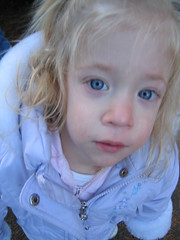This is so cool! I wonder if Alpha-1 is one of the hereditary diseases for which the gene chip tests. WOOHOO for Cincinnati Children's. UPDATE: the chip does test for Alpha-1. This is so awesome! :)
December 22, 2006 - Gene Chip Discovery May Lead to Individualized Treatment for Five Hereditary Liver Diseases
Research Published in the Journal, Gastroenterology
Researchers at Cincinnati Children's Hospital Medical Center have developed the first gene chip to use in the early diagnosis of at least five hereditary liver diseases, to detect genetic causes of jaundice in children and adults, and potentially to lead to personalized treatment options.
The chip, termed the "jaundice chip," is nearly 100 percent effective in the detection of the most common mutations in children with inherited causes of jaundice, according to a new Cincinnati Children's study in the January issue of the journal Gastroenterology.
"Other chips have been developed to assess drug metabolism," said Jorge Bezerra, MD, a pediatric gastroenterologist at Cincinnati Children's and the study's lead investigator. "This is the first chip in the world that has been customized to diagnose genetic mutations in patients with inherited types of liver diseases."
The chip uses a new technology that rapidly and accurately discloses the composition of several genes known to cause liver disease in children and adults. "The jaundice chip may also help us to discover whether subtle changes in these five genes that can cause devastating diseases in children may also modify the clinical course of other common liver diseases in adults," said Mitchell Cohen, MD, director of the Division of Gastroenterology, Hepatology and Nutrition at Cincinnati Children's.
Jaundice is a yellowing of the eyes and skin caused by impairment in bile flow from the liver to the intestine. Impaired bile flow, or cholestasis, commonly known as jaundice, can lead to severe liver disease. In children, jaundice and cirrhosis are responsible for more than half of the need for liver transplantation.
Previous research on humans identified five genes responsible for inherited forms of jaundice. Until now, the broad array of causes of cholestasis including genetic, metabolic, inflammatory and drug- or toxin-induced disorders, created a challenge for physicians to diagnose a specific disease. Therefore, the treatment of affected children was not disease-specific and aimed at optimizing care to help reduce liver transplantation. With the jaundice chip, however, diagnosis can be simplified by surveying the genetic code for mutations in specific diseases.
The jaundice chip was designed as a "five-in-one" gene chip to screen mutations (a permanent change in the DNA sequence that makes up a gene) in five genes using only one milliliter, or less than a half of a teaspoon, of blood. Gene chips contain several thousand small fragments of DNA on a small piece of glass. Incubation of these chips with the patient's DNA sample produce chemical signals that "glow" and allow for the detection of the normal gene sequence, or of mutations if they are present in the patient.
"The jaundice chip is an extraordinary advance for our patients with liver diseases. It will improve diagnostic accuracy for perplexing diseases in infants and children, potentially decrease the need for invasive and costly studies, and allow us to develop specific treatment plans based on the correct genetic diagnosis," said Dr. Cohen.
"With further genetic testing of liver disease, there is the potential that medications can be tailored to meet the needs of individual patients taking into account the patient's genetic make-up," adds Dr. Bezerra. "For now, the use of the gene chip gives families piece of mind, knowing what their child is living with. The next focus of advances will be the development of medication that may block progression of their disease.
Today, detection of liver diseases with the jaundice chip is continuing, using samples from children worldwide through a research protocol in the division of gastroenterology, hepatology and nutrition at Cincinnati Children's. Once approved by the Food and Drug Administration, the potential for wider use is limitless, according to Dr. Bezerra.
The discovery of the jaundice chip was made possible through a grant from the Research Foundation at Cincinnati Children's with additional support by the National Institutes of Health (NIH).
Cincinnati Children's Hospital Medical Center, one of the leading pediatric research institutions in the nation, is dedicated to changing the outcome for children throughout the world. Cincinnati Children's ranks second among all pediatric institutions in the United States in grants from the National Institutes of Health. It has an established tradition of research excellence, with discoveries including the Sabin oral polio vaccine, the surfactant preparation that saves the lives of thousands of premature infants each year, and a rotavirus vaccine that saves the lives of hundreds of thousands of infants around the world each year. Current research directions include the translation of basic laboratory research into the development of novel therapeutics for the treatment of disease, and furthering the development of personalized and predictive medicine.




